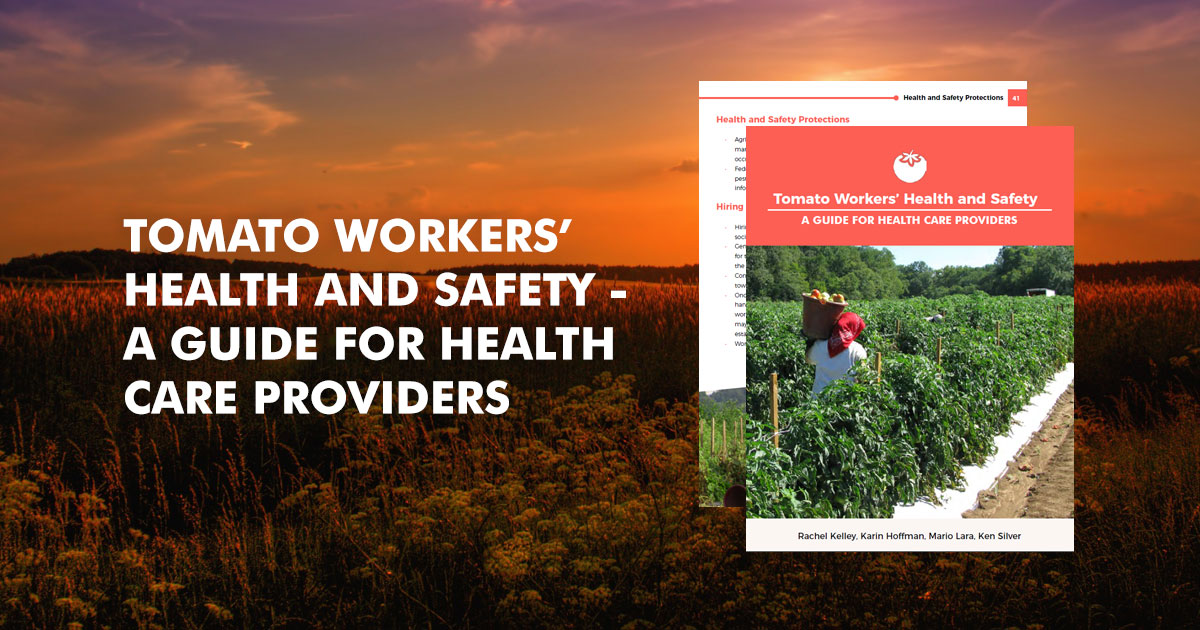Este libro cómico en inglés y español proporciona información básica sobre la salud respiratoria y la contaminación ambiental. Hace un repaso del sistema respiratorio, el material particulado y las fuentes de contaminación del aire. También explica cómo pueden protegerse los trabajadores y sus familias.
- Nadie-sabe-que-respira-hasta-que-la-falta-el-aire_5-22-24_Digital.pdf (3.1 MB)
- COMIC SPANISH PROBLEMAS RESPIRATORIOS FINAL VERSION 22 MAYO 2024.pdf (17.69 MB)
- Nadie-sabe-que-respira_5-22-24_Comic+Logo.pdf (21.94 MB)
- Clear-the-Air-Protect-Your-Health-From-Bad-Air_5-22-24_Digital.pdf (3.08 MB)
- COMIC RESPIRATORY PROBLEMS FINAL VERSION ENGLISH 22 MAY 2024.pdf (17.59 MB)
- Clear-the-Air_5-22-24_Comic+Logo.pdf (21.78 MB)
Los grandes también se vacunan es una herramienta educativa en forma de cómic para los promotores o educadores de salud que trabajan con la comunidad y que necesitan proporcionar información sobre la vacunación, cuándo y dónde se aplican y cuáles son los síntomas que caracterizan las enfermedades que previenen.
A través de la conversación de unos trabajadores en el campo, este cómic colorido y de fácil comprensión, ayuda a sus lectores a aprender de forma sencilla y natural información sobre la importancia de vacunarse y de reforzar las vacunas en la edad adulta para prevenir enfermedades como hepatitis B, meningitis, varicela, influenza, tétano, difteria, tosferina, sarampión, paperas, rubeola y COVID-19.
- Los-grandes-tambien-se-vacunan_Comic_2024-6-5_Digital.pdf (4.1 MB)
- Los-grandes-tambien-se-vacunan_Comic_2024-6-5_Imprimir.pdf (50.21 MB)
- Los-grandes-tambien-se-vacunan_Comic_2024-6-5_Plantilla.pdf (47.93 MB)
- Adults-Get-Vaccinated-Too_Comic_2024-3-7_Digital.pdf (4.53 MB)
- Adults-Get-Vaccinated-Too_Comic_2024-3-7_Print.pdf (45.12 MB)
- Adults-Get-Vaccinated-Too_Comic_2024-5-9_Template.pdf (44.37 MB)
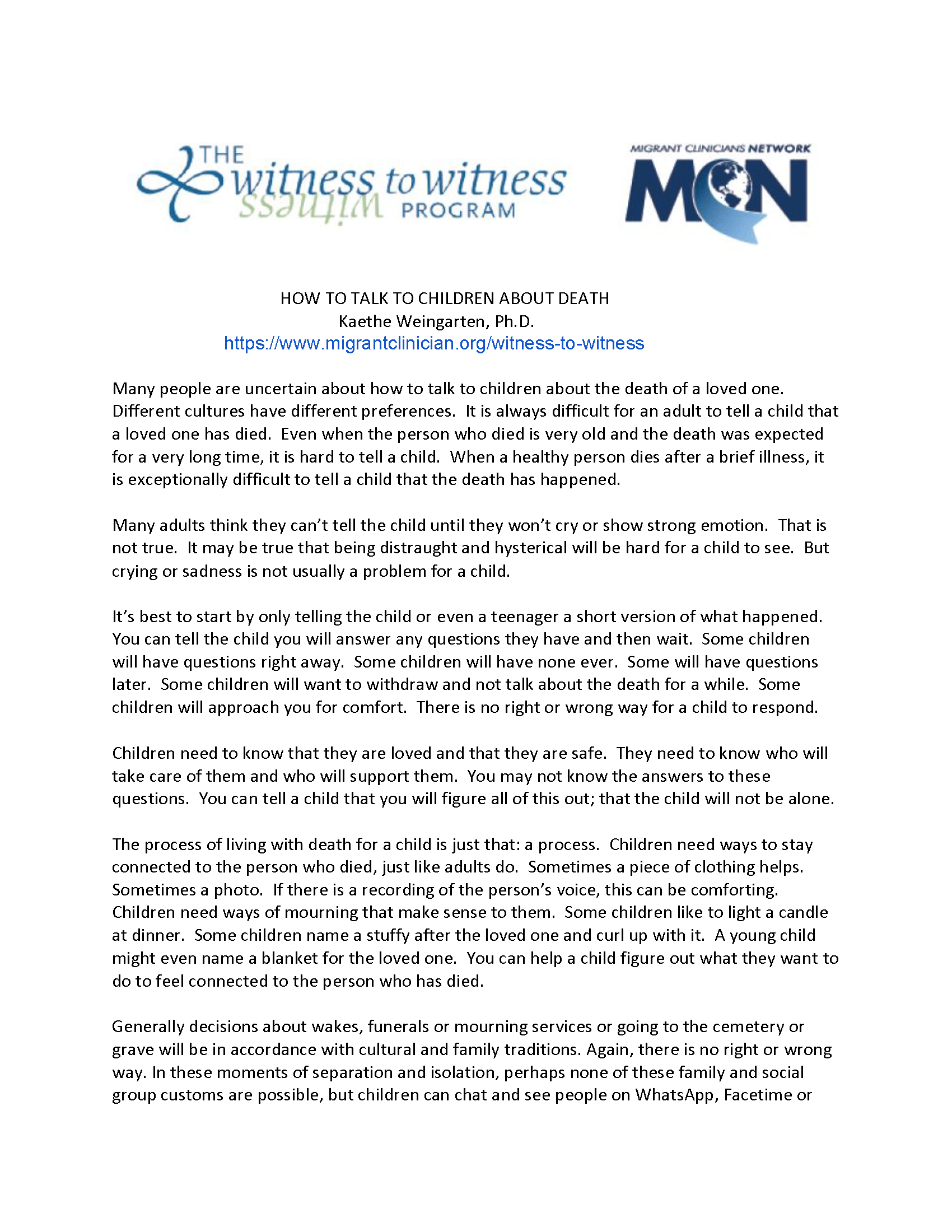

Entre las múltiples obligaciones que tienen los proveedores de salud con sus pacientes, sus familiares y la vida en general, se les olvida colocarse en la lista de prioridades. Este libro cómico dedicado a los proveedores de salud les recuerda lo importante que es cuidarse para poder atender las necesidades de sus pacientes y familiares. También ofrece simples pasos de autocuidado para mejorar el bienestar en general.
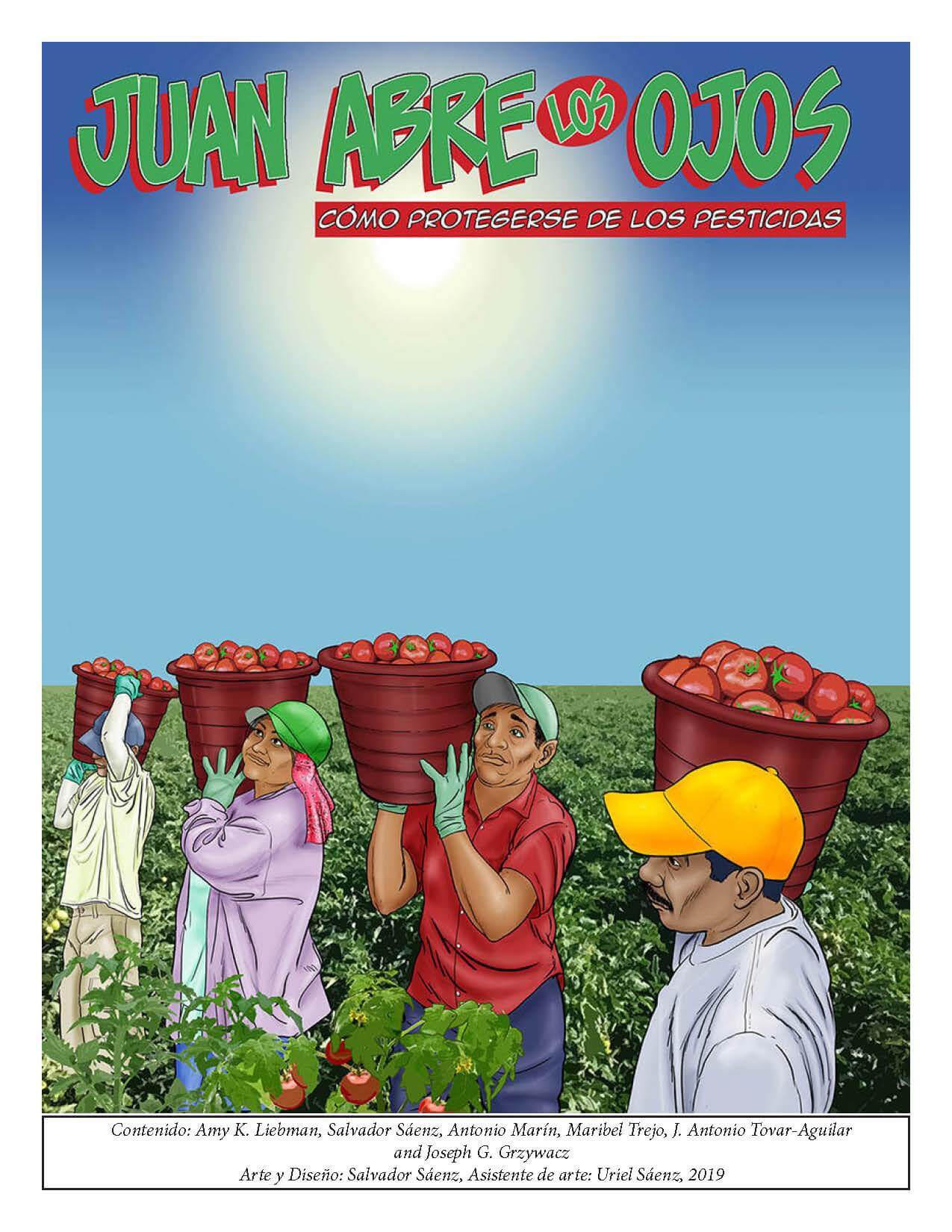
Este libro comic nos cuenta cómo Juan aprendió a protegerse de los pesticidas en el trabajo. Este recurso presenta de una manera muy sencilla y amena cuáles son las fuentes de exposición a los pesticidas, sus efectos en el cuerpo a corto y largo plazo y qué se puede hacer para protegerse de éstos. ¡Es un gran recurso para trabajadores del campo y promotores de salud!
- 2024-08-05_Modèl_depliyan_sou-vaksen-COVID-pou Timoun1.pdf (601.66 KB)
- 2024-08-05_Modèl_depliyan_sou-vaksen-COVID-pou Timoun1.pptx (7.57 MB)
- 2024-08-05_Children-COVID-Vaccine-Trifold_Handout_Template1.pdf (638.71 KB)
- 2024-08-05_Children-COVID-Vaccine-Trifold_Handout_Template1.pptx (9.99 MB)
- 2024-08-05_Niños-COVID-Vacuna-Tríptico_Material-de-apoyo_Plantilla1.pdf (666.67 KB)
- 2024-08-05_Niños-COVID-Vacuna-Tríptico_Material-de-apoyo_Plantilla1.pptx (7.58 MB)
Currículo de entrenamiento sobre las normas de protección al trabajador agrícola y su seguridad sobre los pesticidas -Un currículo cultural y lingüísticamente apropiado con recursos de apoyo para entrenar a los trabajadores sobre las Normas de Protección del Trabajador actualizada. Este currículo fue desarrollado por el Proyecto PISCA de la Universidad Estatal de Florida y la Red de Proveedores de Servicios de Salud para Migrantes.
- WPS PesticidasEnglishFINAL4_2021Website.pptx (33.52 MB)
- WPS PesticidasSpanishFINAL4_2021_Website.pptx (19.67 MB)
- WPSPesticidesFlipChartFINAL_1_23_2020.pdf (8.32 MB)
- WPS Pesticide Facilitator Guide English 2020.pdf (2.03 MB)
- WPS Pesticide Training Facilitator Guide Spanish 2020.pdf (1.99 MB)
- Juan Abre los Ojos como protegerse de los pesticidas (01 14 2020)_0.pdf (7.25 MB)
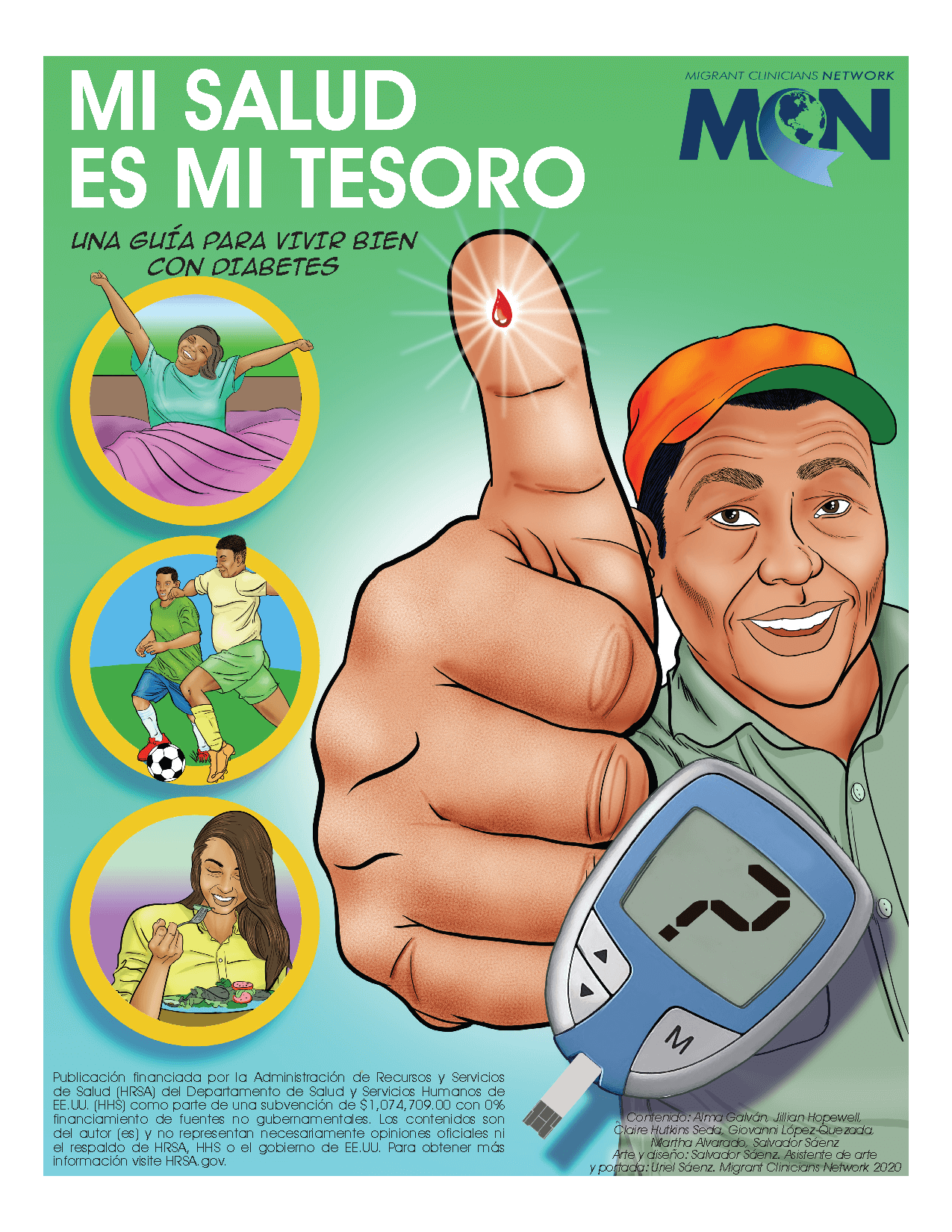
La diabetes es una condición de salud común pero complicada que enfrentan los trabajadores agrícolas en los Estados Unidos. Para ayudarles a conocer sobre esta enfermedad, Migrant Clinicians Network se asoció con Salvador Sáenz (artista profesional y coloborador) para crear "Mi salud es mi tesoro: una guía para vivir bien con diabetes". Este libro cómico en español explora el tema a través de la historia de un trabajador agrícola llamado Goyo, quien recientemente fue diagnosticado con diabetes. En la historia Goyo entable conversaciones con otros trabajadores agrícolas sobre dieta, ejercicio, enfermedad, y prevención mientras enfrenta los retos particulares de vivir como migrante.
- 2023-8-4_Mi-salud-es-mi-tesoro_Comic_WEB.pdf (4.87 MB)
- 2023-8-4_Mi-salud-es-mi-tesoro_Comic_PRINT_0.pdf (38.74 MB)
- 2023-8-21_Mi-salud-es-mi-tesoro_PuertoRico_Web_0.pdf (5.74 MB)
- 2022-6-13_My-Health-Is-My-Treasure_Comic_WEB_0.pdf (4.97 MB)
- 2022-6-13_My-Health-Is-My-Treasure_Comic_PRINT_0.pdf (38.95 MB)
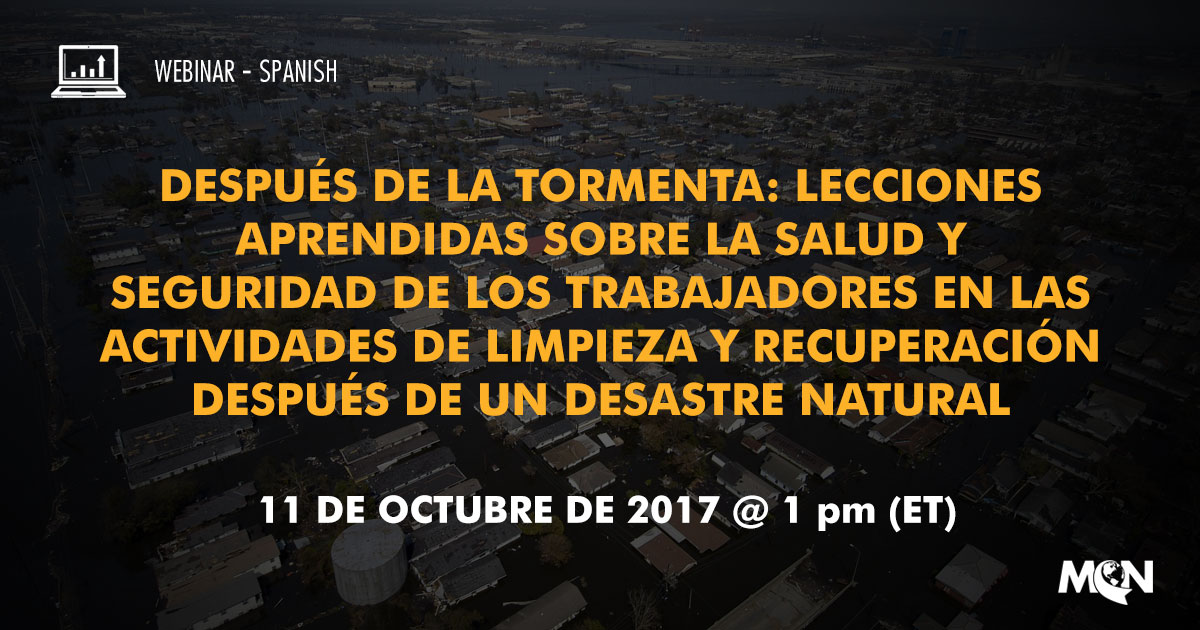
FECHA: 11 de Octubre de 2017 @ 1 PM (ET)
PRESENTADORES:
- Alma R. Galván, MHC, Migrant Clinicians Network
- Richard Rabin, MassCOSH
- Rossana Coto-Batres, MSW, Northeast New York Coalition for Occupational Safety and Health (NENYCOSH)
Crédito de educación continua
Para recibir credito de Trabajador/a de Salud Comunitaria o Educacion de Continua de Enfermera después de ver alguno de estos seminarios usted debe hacer lo siguiente:
- Completar la evaluación participante asociado a cada webinar
- Enviar un correo electrónico con su nombre y apellido indicando que ha completado a malvarado@migrantclinician.org
Descripción
Conforme las familias regresan a sus hogares en Houston, una vez que las inundaciones causadas por los Huracanes Irma y María se van retirando, esto se convierte en una carrera contra el tiempo. Un olor sofocante llena los cuartos de las casas, los charcos permanecen en los pasillos, y el moho se multiplica rápidamente. En cuestión de días, los patios ensopados de los vecinos se convierten en tiraderos de basura, conforme los trabajadores empiezan a quitar de las casas las paredes con moho, los pisos y los cielos destruidos, así como los muebles dañados. En este proceso, los trabajadores y muchos residentes se exponen al agua contaminada con químicos y basura, materiales de construcción peligros y alimañas dañinas. Pero hay otros riesgos adicionales, estructuras inestables y posibles intoxicaciones por monóxido de carbono de los generadores que trabajan incansablemente en espacios con poca ventilación. La exposición a asbestos, sílice y plomo son también peligros comunes para estos trabajadores.
Katrina, Sandy, Harvey, Irma y ahora Maria: son nombres de tormentas que nos indican las diferentes comunidades que terminaron bajo el agua, pero muchas de las historias emanadas de ellas, sobre la limpieza -- y los peligros involucrados-- son las mismas. Con resiliencia y determinación, las comunidades se tratan de reconstruir, pero la reconstrucción necesita una fuerza de trabajo inmediata, lista para este trabajo peligroso y extenuante.
Las operaciones de recuperación después del desastre, limpieza y reconstrucción presentan muchos riesgos y peligros para los trabajadores. Muchos de ellos realizan este trabajo sin el equipo de seguridad o el entrenamiento de mitigación de peligros adecuado.
En la recuperación de una supertormenta, ¿cuáles son las vulnerabilidades que los trabajadores enfrentan y qué significa eso para la seguridad y la salud del trabajador? Las siguientes preguntas surgen para los proveedores y trabajadores de salud comunitarios que cuidan y se preocupan por estos trabajadores: ¿cuáles son los puntos claves que necesitamos entender para poder cuidar de aquellos involucrados en estos esfuerzos de limpieza y reconstrucción? y ¿qué podemos hacer para que ellos mismos prevengan las lesiones y las enfermedades?
Este seminario en línea recupera experiencias obtenidas de desastres naturales anteriores y ofrece recursos que le pueden guiar en su trabajo. Ofreceremos casos reales para ilustrar los peligros y revisaremos formas en que los trabajadores se pueden proteger a sí mismos, incluyendo el entendimiento de sus derechos y responsabilidades.
Objetivos de aprendizaje
- Los participantes identificarán los peligros más comunes y críticos que los trabajadores y residentes encuentras cuando se involucran en la demolicion y reconstruccion despues de un desastre.
- Los participantes articularán las mejores estrategias para educar a los trabajadores y residentes sobre como prevenir lesiones y enfermedades durante las actividades de limpieza y reconstrucción después de huracanes y supertormentas.
- Los participantes enlistarán al menos tres recursos que pueden usar para guiar a los trabajadores y residentes durante la demolición y reconstrucción después de un desastre.
Este proyecto cuenta con el apoyo de la Administración de Recursos y Servicios de Salud (HRSA) del Departamento de Salud y Servicios Humanos de los Estados Unidos bajo el acuerdo de cooperación número U30CS09742, Asistencia Técnica a Centros de Salud Comunitarios y Migrantes y Personas sin Hogar por $ 1,094,709.00 con 0% del total Proyecto NCA financiado con fuentes no federales. Esta información o contenido y las conclusiones son las del autor y no deben ser interpretadas como la posición o política oficial de, ni cualquier endosos deben ser inferidos por HRSA, HHS o el Gobierno de los Estados Unidos.
Aquí encontrará este recurso en inglés y español del Center for Child Stress and Health de la Universidad de Florida sobre cómo hablar con un niño que esté preocupado por una posible deportación y el estrés asociado a esta posibilidad.
- CCSH_Deportation_EN.pdf (72.55 KB)
- CCSH_Deportation_SP.pdf (70.94 KB)
Available in English and Spanish!
Created by MCN, medical student Rachel Kelley of UCSF, and collaborators at East Tennessee State University, this guide is intended to be a reference for health care providers who work with people employed in the U.S. tomato industry. It aims to prepare providers with a more detailed understanding of hazards, health issues, and work processes associated with different tomato industry jobs.
This guide draws on published research, experienced health professionals’ advice, and information gathered from interviews and focus groups conducted with 36 tomato workers from diverse backgrounds and 14 community leaders familiar with tomato workers’ health in multiple states. It is important to note that health and safety conditions at any particular farm or company may vary from what is described here. Furthermore, individual workers may experience the same set of conditions differently.
The first section of the guide focuses on health hazards and health conditions commonly encountered in tomato production. The second section consists of detailed descriptions and illustrations of different tomato production tasks. The third section covers “human resources” information and policies that apply to U.S. agricultural workers generally. The appendices contain a Spanish-English glossary, further detail about different types of pesticides, information about agricultural occupational health policies and regulation, and a list of resources and readings.
Una guía para saber cómo reaccionar cuando vea que acosan a alguien. La ilustración artística y el guión son de Uriel Saenz y Alma Galván
Chapter 14: Pesticides Are Poison from the Hesperian.org health guide: A Community Guide to Environmental Health.
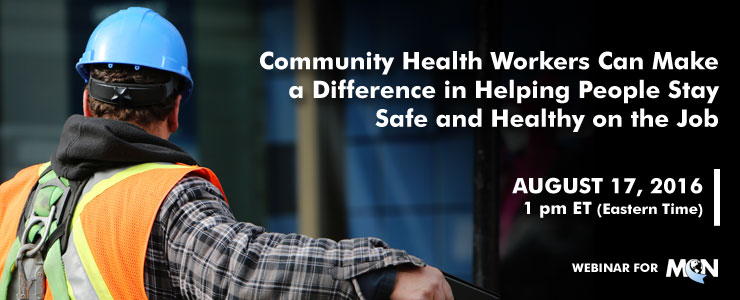
DATE RECORDED: August 17, 2016 at 1 pm ET
PRESENTED BY: Amy Liebman, MPA, MA and Wilson Augustave, member of MCN’s Board of Directors and Senior HIV Case Manager at Finger Lakes Community Health
This material will be produced under grant number SH-27640-15-60-F-48-SH5 from the Occupational Safety and Health Administration, U.S. Department of Labor. It will not necessarily reflect the views or policies of the U.S. Department of Labor, nor does mention of trade names, commercial products, or organizations imply endorsement by the U.S. Government.
- http://migrantclinician.adobeconnect.com/p50hmpih2ti/?OWASP_CSRFTOKEN=3e2b187aeeb1282a41d5df37d8a98c307a7e00006662aca9d5f21dc12aa036c4
- http://www.migrantclinician.org/
- http://workerscomphub.org/
- http://workerscomphub.org/navigating-system
- https://www.osha.gov/workers/index.html
- http://www.coshnetwork.org/know-your-rights
- http://hesperian.org/books-and-resources/
Este diccionario ilustrado bilingüe de MCN, "Seguridad en Palabras/ Safety in Words", muestra los peligros que hay en el lugar de trabajo y las mejores prácticas para la salud y la seguridad en la agricultura. Desarrollado con el apoyo del Programa de Subvenciones Susan Harwood de OSHA, este recurso refuerza el vocabulario en inglés de los trabajadores que hablan español lo que ayudará a prevenir lesiones en la agricultura.
Este libro cómic bilingüe a todo color trata la indemnización laboral por accidente, los derechos y responsabilidades de los trabajadores inmigrantes que trabajan en granjas lecheras. Cuenta la historia de un trabajador mexicano de una granja lechera que se lesiona en el trabajo y los pasos que él y su empleador dan para asegurarse de que reciba sus beneficios y la granja mejore su seguridad. Incluye historias aplicables en todo Estados Unidos y otras específicas de cada estado.
- DairyWrkrRightsWrkComp_ENG2016_web.pdf (7.78 MB)
- DairyWrkrRightsWrkComp_ESP2016_web.pdf (7.92 MB)
- COMIC - Safety and Health on the Farm - New Mexico - English.pdf (3.4 MB)
- COMIC - Safety and Health on the Farm - New Mexico - Spanish.pdf (3.41 MB)
- COMIC - Safety and Health on the Farm - New York - English.pdf (3.45 MB)
- COMIC - Safety and Health on the Farm - New York - Spanish.pdf (3.46 MB)
- COMIC - Safety and Health on the Farm -Minnesota -English.pdf (7.78 MB)
- COMIC - Safety and Health on the Farm - Minnesota - Spanish_0.pdf (7.91 MB)
This website and training material were developed to give communities and promotores ways to help farm workers learn how to protect themselves from pesticide exposure.
The project and all materials on the website were developed by the California Poison Control System in collaboration with the the Western Center for Agricultural Health and Safety at the University of California, Davis and the California Department of Pesticide Regulation.

- DPR_Facilitator_Manual_EN.pdf (4.77 MB)
- DPR_Participant_Manual_EN.pdf (4.91 MB)
Señales y síntomas de envenenamiento por pesticidas
Developed by the California Poison Control System in collaboration with the Western Center for Agricultural Health and Safety at the University of California, Davis and the California Department of Pesticide Regulation
!Cuídate! es un recurso educativo sobre la prevención de lesiones musculoesqueléticas en el trabajo. Este libro cómic está disponible en español, inglés y criollo haitiano.
- injury prevention SPANISH 2019.pdf (11.9 MB)
- injury prevention ENGLISH 2019.pdf (19.34 MB)
- injury prevention WEB CREOLE AUG 14 2019.pdf (12.77 MB)
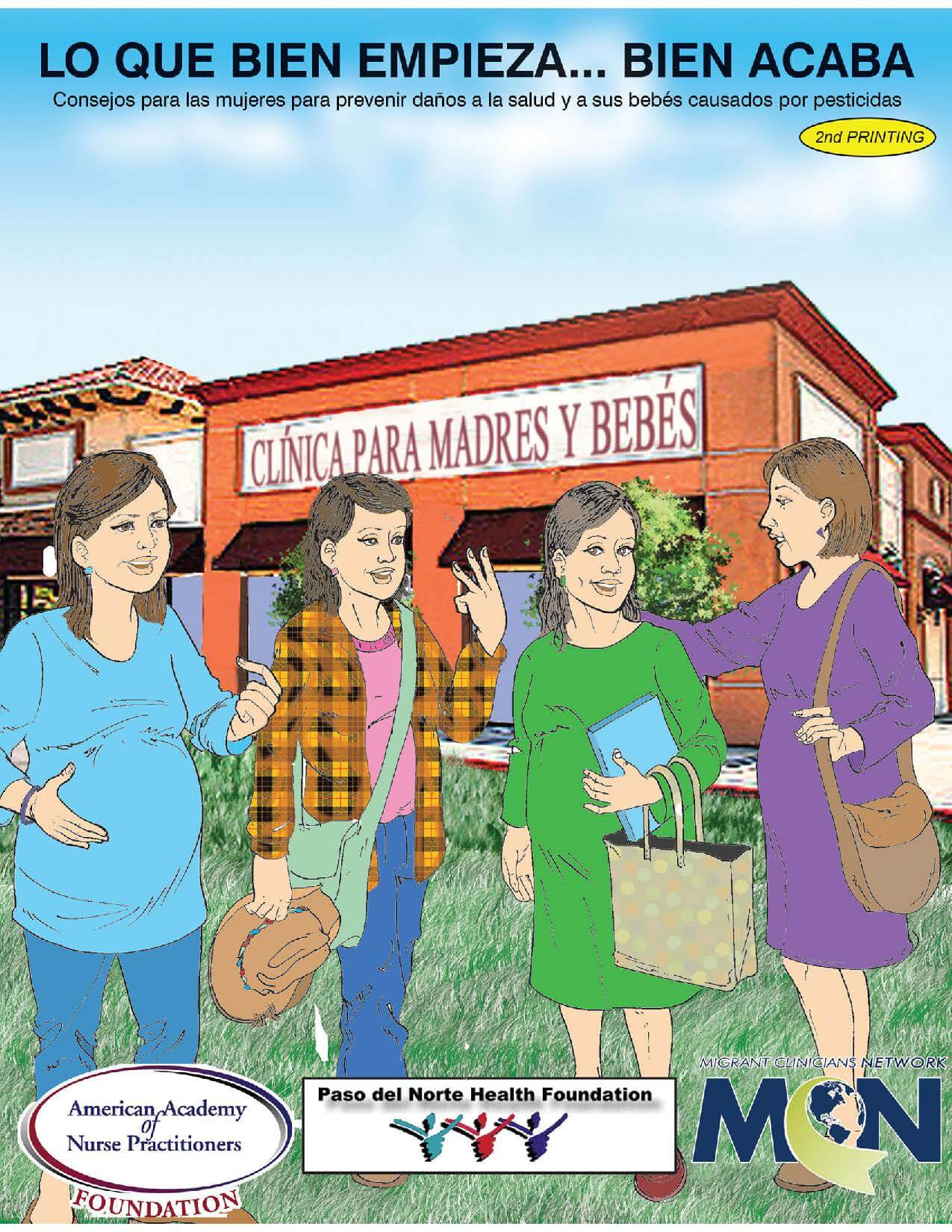
Este libro cómico de MCN tiene por objeto reducir el riesgo de exposición a pesticidas de las mujeres que están en edad reproductiva. LO QUE BIEN EMPIEZA...BIEN ACABA: Consejos para las mujeres para prevenir daños a la salud y a sus bebés causados por pesticidas.
- lo que bien empiezacomic 2015-20mb.pdf (16.45 MB)
Three printable brochures on Asthma, Lead and Pesticides produced by Farmworker Justice.
- SpanishBrochures.pdf (4.88 MB)
- EnglishBrochures.pdf (4.88 MB)
Educational comic book about the sources of indoor pollution and ways to minimize exposure. Offers safe alternatives to clean homes. English and Spanish.
- BreathingEasyComicEng.pdf (2.36 MB)
- UnaCasaLibreDeProblemasRespiratorias.pdf (2.85 MB)

Este libro cómico sobre pesticidas está dirigido a los trabajadores comunitarios y a las familias de trabajadores agrícolas migrantes y temporales. Tiene por objeto educar a los padres sobre los riesgos de exposición a pesticidas que tienen sus hijos y cómo reducir estos riesgos de exposición. La última edición sólo está disponible en español, aunque estamos trabajando para publicar una versión actualizada en inglés.
Actualmente se encuentra agotado el formato impreso de este libro cómico. Estamos buscando fondos adicionales para imprimirlo. Mientras tanto, usted puede descargar una copia electrónica libremente.
- AUNQUE-CERCA-SANO-2020_PRINT.pdf (21.69 MB)
- PesticidesNearbyButHealthyENG_2007_0.pdf (1.33 MB)
A Spanish language trifold with pesticide safety information.
- TrCaptico_pesticidas.pdf (7.28 MB)
A Spanish language comic books that explains the dangers of pesticides and offers practical, less toxic approaches to pest control. Produced by the Center for Environmental Resource Management at UTEP.
El manual es una guía que pueden usar los trabajadores comunitarios, educadores y promotores de salud durante sus actividades educativas en la comunidad. Ofrece información sobre los riesgos de la exposición a los contaminantes ambientales y plaguicidas y las formas de reducir esos riesgos. También incluye información y consejos útiles para trabajar en la comunidad.
En cuanto al libro cómico, los trabajadores comunitarios, educadores y promotores de salud pueden usarlo como una herramienta educativa para informar a su comunidad sobre los riesgos de los contaminantes ambientales y los plaguicidas.
- pocovenenocomicless20.pdf (16.8 MB)
- Poco Veneno No Mata 2nd Edition - June2019.pdf (5.27 MB)
- A LITTLE POISON WILL IT KILL YOU_June-2019.pdf (5.14 MB)
Pesticide and Pregnancy Handout, English and Spanish, from the Wake Forest University School of Medicine.
- PesticideandPregnancyHandoutEnglish.pdf (3.45 MB)
- PesticideandPregnancyHandoutSpanish.pdf (3.79 MB)
